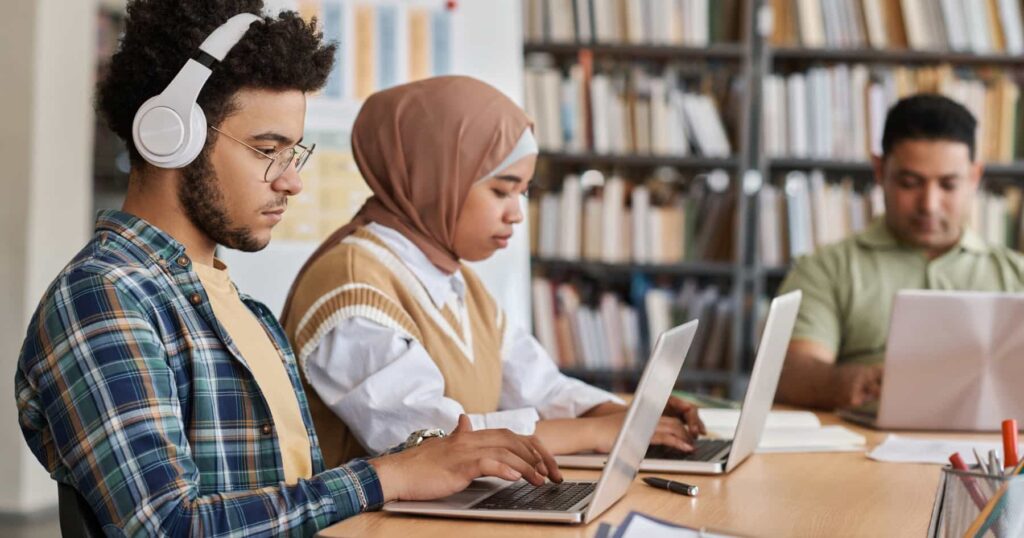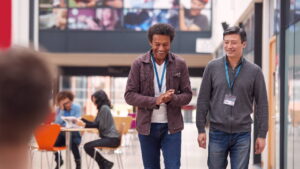“I don’t know how to get started…” or “I need help…I can’t do it on my own…”
These phrases are often heard in our classrooms as teachers. For some learners, a lack of independent learning skills could stem from low effort, low confidence, misunderstandings, or a combination of factors. While some students seem naturally inclined toward self-directed learning, it’s clear these are skills that can and should be explicitly taught.
To cultivate classrooms of independent learners, we need to define our goals – the behaviours, attitudes, and attributes we want students to demonstrate. Then, we must purposefully plan how and when to systematically develop those crucial independent learning skills over time. Simply expecting students to acquire them isn’t enough; nurturing independent learners requires an intentional approach.
Understanding Independent Learning
Being able to take learning into your own hands is a skill that’s becoming increasingly important these days. Independent learning is all about developing that internal drive to expand your knowledge and abilities through your own motivation and initiative, rather than solely relying on teachers or structured curriculums. It involves cultivating a mindset of curiosity, self-discipline, and a willingness to actively seek out learning opportunities.
In this blog, we’ll explore what it truly means to be an independent learner, why this approach is so valuable in our rapidly changing world and strategies for nurturing these qualities in learners from an early stage. Mastering independent learning equips individuals with the tools to continue growing and adapting as lifelong learners, essential skills for navigating whatever the future may bring.
Definition of Independent Learning
- Independent learning is when pupils set goals, and monitor, and evaluate their own academic development.
- It allows pupils to take ownership of their learning and develop a sense of responsibility and self-direction.
The Importance of Developing Independent Learning Skills
Encouraging students to develop independent learning skills can improve learning outcomes and academic development. It helps students become motivated learners and develop a growth mindset. Moreover, independent learning is a valuable life skill that can be used throughout education and beyond.

Strategies to Encourage Independent Learning
Here are four strategies that you can embed into your planning and teaching to help your learners practice and enhance their independent learning skills. Not only will this help them in school but will also prepare them effectively for post-16 and post-18 education and the workplace.
1. Embed retrieval practice into your lessons
Facilitate learning by giving children the tools and resources they need but letting them decide how to use them. Allowing children to problem-solve and look for solutions elsewhere can build confidence and encourage independent learning.
Furthermore, if something is taught once, it is quickly forgotten, whereas the spaced retrieval of content supports information being moved from the working memory to the long-term memory. This helps to free up learners’ cognitive load, enabling them to focus on the task and apply their knowledge, which can reduce the sense of panic that learners feel when faced with a blank page.
2. Model Independence: Demonstrating Self-Directed Learning
By giving students an example of what independence looks like in practice, we provide younger children with confidence in their own abilities helping them grasp the concept more effectively. This approach not only aids in their understanding but also significantly contributes to developing problem-solving skills and boosts their confidence as they learn to navigate challenges on their own.
For example, if you were teaching students about maths equations you would show them the method and how you used that method to arrive at the correct result. This helps children not only provides children with a visual aid but encourages them to try independent problem solving and develop their own learning.
However, it’s crucial to be mindful when scaffolding these skills. Our goal is to foster genuine independence, not simply shift a learner’s dependence from the teacher to additional resources. To achieve this, we must thoughtfully plan both the introduction and gradual removal of any scaffolding.
This strategic approach ensures that supports are withdrawn at the right pace, allowing learners to transition smoothly from guided learning to authentic, self-directed learning. By modelling independence can help children develop a sense of what it looks like to be independent.
3. Use Fisher and Frey’s Gradual Release Model
Ensure learners are set up for success by using the ‘I do, we do, you do it together and you do it alone’ approach. First, explicitly model your thought process and deliver clear explanations to learners. Then model with the learners whilst questioning them, before allowing them to complete examples with peer support. Finally, they should have plenty of time to work alone without interruption. As suggested by the name, this gradual release of control helps to build learner confidence.
Additionally, this model encourages collaboration between peers and supports the development of independent learners. It also provides opportunities for students to work in small groups to develop their own ideas and skills. Peer assessment helps students develop metacognitive and interpersonal skills, enhancing their ability to learn independently.
4. Consider how learners can use formative assessment to develop their independence
Rather than just seeing this as a tool for your benefit, check in with learners on how they can use assessment tools. Teacher feedback, self-assessment and peer assessment can be very powerful in helping learners to become less reliant on you. Finally, remember that creating independent learners is not a quick process: plan carefully, go step-by-step and review your progress regularly!

Strategies to Encourage Independent Learning
Offer opportunities for self-monitoring and reflection
Encourage students to track their learning and reflect on their progress, this can be done by journalling or through a digital tool. This helps students to develop a sense of confidence and take ownership of their own learning. When students can see evidence of their growth over time, it shifts their perspective. Comments like “I understand maths now” or “I can now structure a proper essay” become common. Seeing this progress laid out helps them recognise their own capabilities and help them achieve their own learning goals.
Create an open environment for fostering independence
Design a classroom environment that supports independent learning
The classroom environment plays a pivotal role in fostering independent learning and collaboration among students. By thoughtfully arranging furniture, you can create cosy nooks for individual study and open spaces for group work, encouraging pupils to take ownership of their learning journey.
Consider setting up a reading corner with comfy bean bags, a research station with computers, or a creative hub with art supplies. These distinct areas not only cater to different learning styles but also empower students to choose where they work best, boosting their autonomy and self-direction.
Moreover, a well-designed classroom can provide a wealth of resources and support for independent learning. Stock your bookshelves with a diverse range of texts, from classic novels to contemporary magazines, catering to varied interests and reading levels. Display mind maps, glossaries, and step-by-step guides on the walls to aid self-guided study.
Empowering learners through choice and ownership
Give pupils choices and encourage setting own learning goals
This helps students take ownership of their learning and develop a sense of responsibility. It will not only help students develop a growth mindset and become more independent learners, but teach them lifelong learning skills, such as time management and working independently therefore leading them to obtain a deeper understanding and improved academic performance in their own work.
Digital resources:
Andrew Bridge is a guest author and writer for our sister company Connex Academy Andy has written the course: Awareness for Creating Independent Learners.


